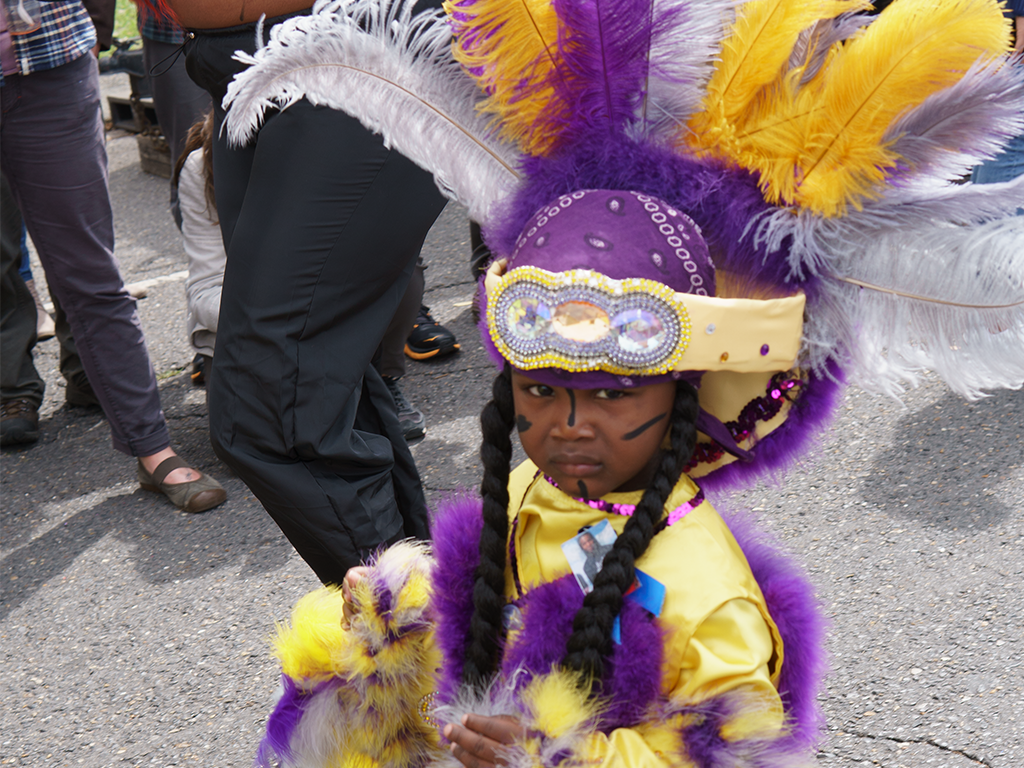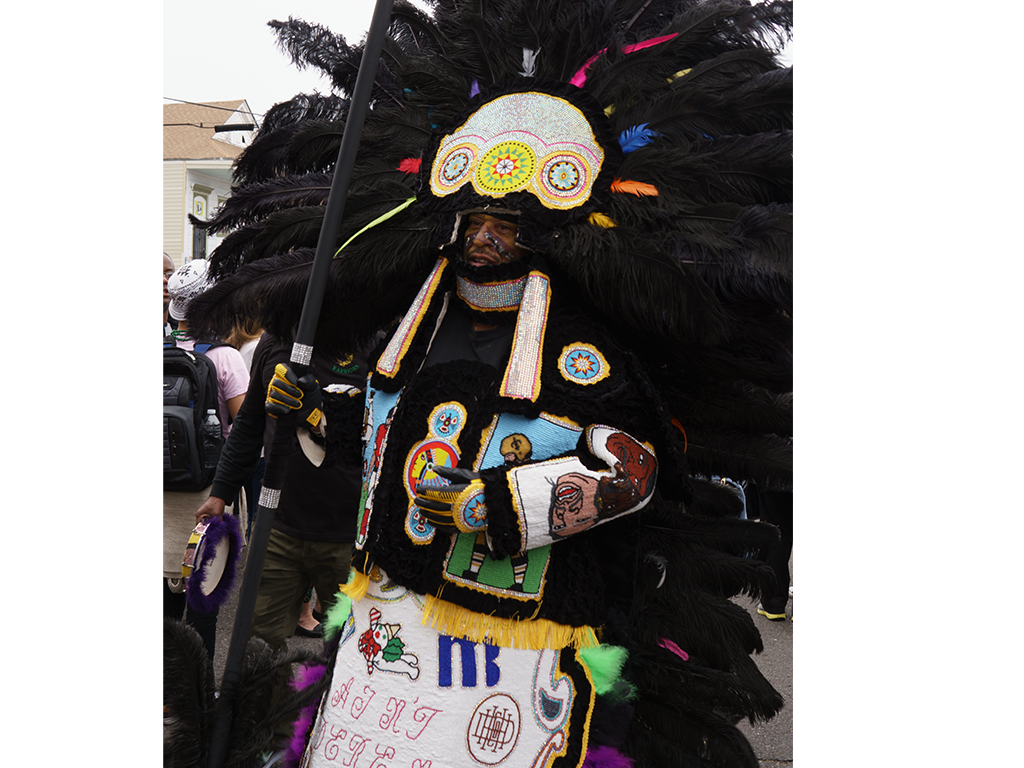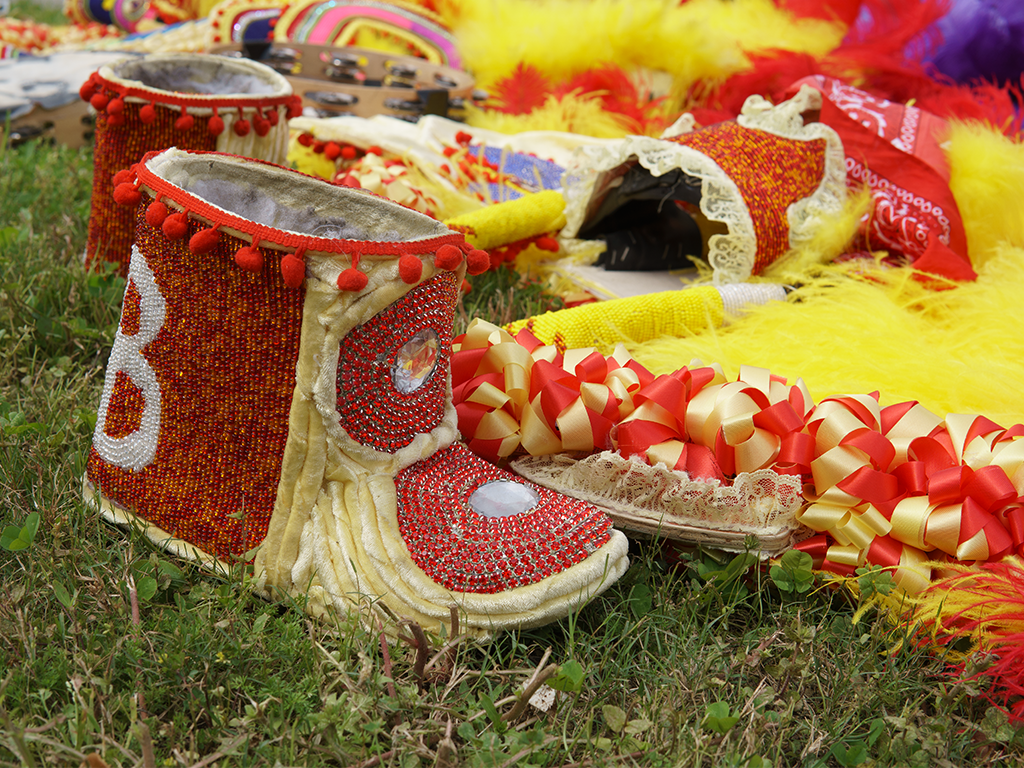Black Masking Indians or Mardi Gras Indians (original) (raw)
Para leer en español, presiona aquí: Indios Negros Enmascarados o Indios de Mardi Gras
By AnaMaria Bech
Being part of one of the more than forty Mardi Gras Indian tribes is passed almost exclusively from generation to generation, and it is a tradition that involves several rituals that mix African and Native cultural traditions.

A carnival tradition we should learn more about is that of the Black Masking Indians, also known as the Mardi Gras Indians. The first time I saw them parade, their presence struck me, and I wondered why their colorful, impressive outfits resembled Native American attire and why they used indigenous names. I didn’t understand what carnival had to do with Native cultures, and since then, I tried to find out more about this tradition. In a city with such a mixture of cultures, the existence of Mardi Gras Indians makes a lot of sense.
As the story goes, around 1718, the African and Native communities of Louisiana coexisted because, as they shared a common experience of enslavement, they helped each other. Native American tribes provided a haven for Africans who escaped slavery. For that reason, they learned from each other’s customs and created new traditions. The use of beads, feathers, masks, and headdresses was common in West African cultures, so making the suit was a tradition that offered some commonality between the two groups and allowed for the preservation of African traditions.

According to historical accounts, adopting the indigenous persona by African descendants was not only done to hide their identity from enslavers, but it was a way of paying homage to the tribes that welcomed them and allowed them to practice their traditions.
The carnival celebration in New Orleans was an exclusive event for white and affluent people, and elaborate costumes were a big part of the carnival. For African descendants, making and wearing Indian suits during the special celebration symbolized freedom and resistance as it allowed them to preserve their ancestors’ traditions. The suit-making tradition has been kept alive for generations. The Black Masking Indians took to the streets on Fat Tuesday, wearing their elaborate suits to take part in the celebrations, expressing pride in their culture, and remembering with songs like “Won’t bow down, don’t know how,” that they don’t know how to kneel before anyone.
Being part of one of the more than forty Mardi Gras Indian tribes is passed almost exclusively from generation to generation, and it is a tradition that involves several rituals that mix African and Native cultural traditions. The suits of the Mardi Gras Indians have special meanings, and putting them together with patches, feathers and colorful beads takes an average of nine months. Each suit is used only for the year it debuts, and it tells the unique story of the wearer. The story can vary in topics from autobiographies, family stories, and social issues to pop culture. The majestic suits can weigh up to 80 pounds.
Fat Tuesday is when suits are worn in public for the first time. The tribes have celebrated their traditions since before the First World War. Mardi Gras Indians took to the streets on St. Joseph’s night, as it was already a special day of celebration by Italian Catholics in the city.
Nowadays, the Black Masking Indians’ most significant celebration is on Super Sunday. Super Sunday was celebrated around St. Joseph’s Day but was established as an official parade in 1969 and set on the third Sunday in March. On this day, Uptown and Downtown tribes gather to dance and sing through the streets of Central City in New Orleans.
Ceremonial dances occur during the parade, and when the tribes meet, a ritual of respect that involves bowing to the other tribe happens. Being a Mardi Gras Chief is a great honor. They have become role models for children who observe the respect chiefs receive from the community because they proudly represent their culture and traditions.

To learn more about the history of the Black Masking Indians, you can visit the Backstreet Cultural Museum at 1531 St. Philip Street in New Orleans.
Uptown Super Sunday will be on March 17 this year. The parade begins at noon in A.L. Davis Park at Washington Avenue and La Salle Street.
You can support VIVA NOLA’s mission of connecting communities by donating here. Your support, in any amount, is very appreciated.